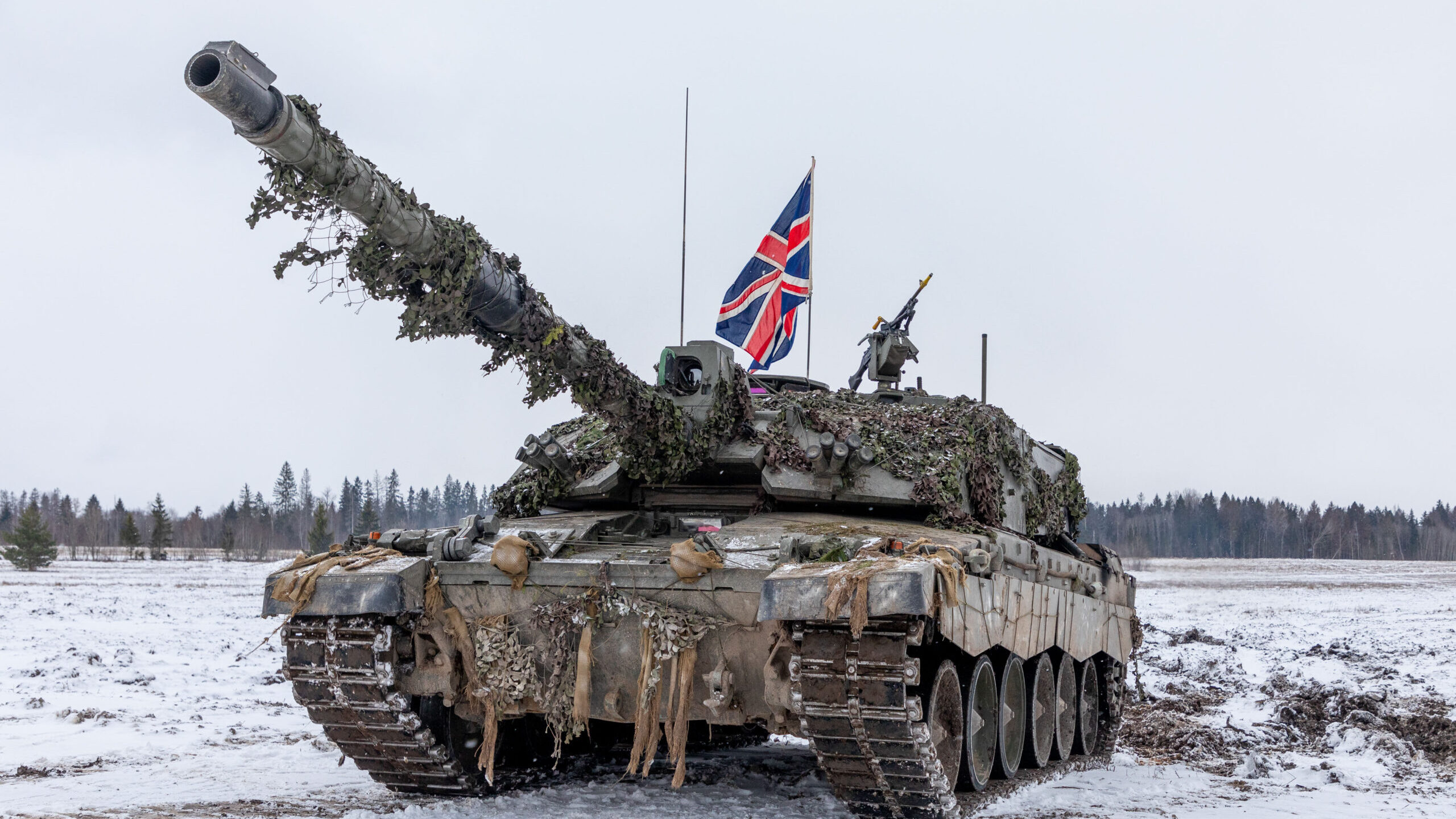
A British Challenger II main battle tank during exercises in Estonia (Photo: British Army)
BELFAST — Despite UK Prime Minister Rishi Sunak declaring earlier this week that British defense spending will increase to 2.5 percent GDP by the end of the decade — a move he called a “generational investment” —analysts say they have serious questions about the government’s plan, including how the money will be raised and what effect it would have if it were.
Sunak made the announcement on Tuesday during a visit to Poland, alongside NATO Secretary General Jens Stoltenberg, revealing that London wants to spend a cumulative extra £75 billion ($93 billion) over the next six years, resulting in a 2030 annual defense budget of £87 billion ($108 billion) in 2030.
Other commitments include a £10 billion ($12.4 billion) investment in munitions to support industry moving to a “war footing” production ramp up and “at least” 5 percent of the defense budget reserved for research and development activities.
Sunak said the spending uplift is “fully funded” and amounts to a “turning point for European security,” but the plan remains highly uncertain primarily because it’s unlikely to go ahead, at least not in its current form, if the Conservative Party, which Sunak leads, loses the next UK general election to the opposition Labour Party. Labour leader Keir Starmer pledged earlier this month to meet a 2.5 percent GDP defense spending target when “resources allow.” Current British defense spending sits at around 2.3 percent GDP.
The forthcoming election is scheduled to happen in the second half of this year with polling showing that Labour is in position to lead a majority government, according to The Guardian newspaper.
In the more immediate term, experts appeared skeptical about the lack of details provided by Sunak’s spending plan.
Malcolm Chambers, Deputy Director General at the Royal United Services Institute, a British military affairs think tank, wrote on Wednesday, it “remains as yet unclear” how the Conservatives will fund the jump to 2.5 percent GDP, suggesting that aspect of the plan, is its “least convincing part.”
“[A] sustained increase in defence spending of some £10 billion ($12.4 billion) per annum (compared to previous planning assumptions) is bound to require a comparable scale of tax rises, additional cuts in other government departments, or some mixture of the two,” Chambers noted. “It will be for the next government to decide how to answer this critical question.”
Chambers strongly suggested that even if it comes, the new funding will not fix financial problems related to UK acquisition programs and could only be used as “an opportunity to close the gap.” That’s a direct reference to the National Audit Office’s report from December 2023 that warned London’s 10-year military Equipment Plan, running to 2033, exceeds forecast costs by £16.9 billon ($21.1 billion). Similarly, Chambers did assess that the additional money could assist the UK in responding “more rapidly to the lessons of the Ukraine war.”
Such is the scale of British Army acquisition problems alone, that they could not be resolved if the UK moved to a long-term spending settlement of 4 percent GDP, said Peter Roberts, senior fellow at the Centre for Public Understanding of Defence and Security at the University of Exeter.
A total of “4 percent on the army is probably not enough… to recapitalize [and deliver] size, level and capability that you need today,” he told the UK’s International Relations and Defence Committee on Wednesday.
In the company of Roberts, Nick Carter, former head of the British Army, told lawmakers that he doubted the new money forecast from Sunak could sort out British Army modernisation issues, as, “it would take a while to spend the money, if indeed the money comes through.”
The financing and management of British Army acquisitions has long troubled the service, owing largely to cost overruns, delays and cancellations. Criticism of the Ajax Armored Fighting Vehicle (AFV), developed by General Dynamics UK has been particularly severe, with the platform set to enter service in 2025, eight years later than planned and following excessive vibrations that left some service personnel suffering hearing loss.
Beyond the question of where the money is coming from, another analyst also raised questions about Sunak’s calculations to begin with.
Posting on X (formerly Twitter) Ben Zaranko, an economist at the Institute for Fiscal Studies, a UK research institute, questioned the reliability of the figures included in the spending plan, specifically the figure of £75 billion over six years. Zaranko said an alternative calculation employing a baseline of spending, frozen as a percentage of GDP, works out at £20 billion ($24.8 billion) over the same period.
To get the £75 billion number, the government has assumed a baseline with spending frozen in cash terms and then added up all of the differences. If you instead assume a baseline of spending frozen as a % GDP, it's an extra £20 billion over 6 years. Details here. pic.twitter.com/psKbaKbVSP
— Ben Zaranko (@BenZaranko) April 23, 2024
However the numbers add up, for now all eyes will be on the political situation in the UK, with an election looming and tens of billions of dollars for defense in the balance.
Marines eye 2025 fielding of 3 new, mobile air defense systems
“We are on track from a programmatic standpoint — cost, schedule performance — but we’re always gonna be late to need,” said Col. Andrew Konicki, the program manager for Ground Based Air Defense (GBAD). “The threat is ever changing and ever evolving.”


























